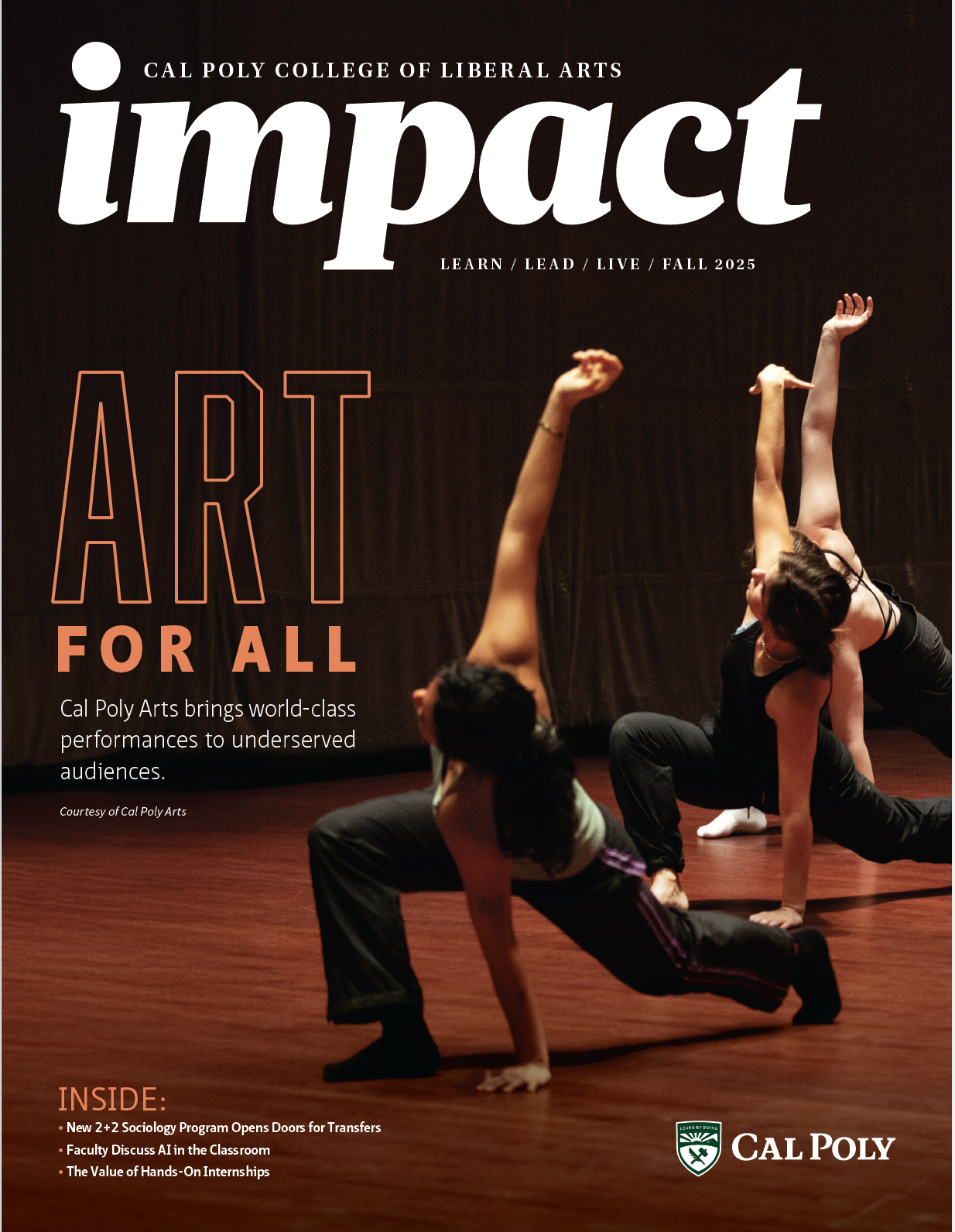A Place to Innovate
By Larry Peña // Photos by Joe Johnston and Dylan Head
This spring, Cal Poly dedicated the newest hub for learning on campus: the William and Linda Frost Center for Research and Innovation. The new interdisciplinary research center features state-of-the-art laboratory and teaching spaces that enhance research and learning experiences for students and faculty in the Bailey College of Science and Mathematics; the College of Agriculture, Food and Environmental Sciences; and the College of Liberal Arts.
“This cutting-edge facility is an investment in the education and future successes of our students,” said William “Bill” Frost, a biochemistry alumnus whose generous gift made the building possible. “I look forward to this space being used to further enhance the Learn by Doing experiences that define Cal Poly for generations to come.”
The building is the new home for several important university research centers and facilities. The Center for Applications in Biotechnology and the Center for Coastal Marine Sciences have labs in the building. The Food Science and Nutrition Department has essential new spaces dedicated to culinary development, nutrition and food studies, sensory analysis and food safety in the building’s Boswell Agricultural Technology Center, and the Experience Industry Management Department has an Experience Innovation Lab to design unique user experiences. The Liberal Arts and Engineering Studies program has an impressive new facility in the Cashin Expressive Technology Studio.
And surrounding all these labs and research facilities are connected spaces for student collaboration; beautiful new offices for the interdisciplinary faculty associated with the labs; a stunning central atrium and event space where students can lounge and study; a rooftop garden that doubles as a learning lab; and a bright, appealing design overall that draws people together in the process of discovery.
Over the summer, Cal Poly Magazine got a chance to explore some of the center’s cutting-edge facilities and learn about what students will being doing there. Learn more about how faculty and students in the CLA are studying innovative storytelling techniques.
The Future of Storytelling
 Student Alyse Murray tests out the studio’s virtual reality gear.
Student Alyse Murray tests out the studio’s virtual reality gear.
The theater is silent and dark. The sound- absorbent tiles that cover the walls like a sprawling cityscape are barely visible, but they’re doing their job — the room is quiet enough that you can almost hear your own heartbeat.
Suddenly a 20-foot projection screen flares to life with the trailer for a sci-fi blockbuster. Your ears track the motion of the laser blasts flashing past you and spaceships scream overhead as the Dolby Atmos sound system kicks into action, projecting bone-shaking surround sound.
It’s not a Hollywood screening room — it’s a cutting-edge studio dedicated to teaching liberal arts and engineering (LAES) students the latest techniques in immersive audio and visual storytelling, and it’s on the ground floor of the Frost Center.
The space is already slated for lots of student and faculty research over the next few quarters.

Music professor Julie Herndon and computer science
professor and LAES co-director Michael Haungs work
with the studio’s new sound mixing board.
Music professor Julie Herndon and computer science professor and LAES co-director Michael Haungs work with the studio’s new sound mixing board.
Music professor Julie Herndon is using a research grant to develop a new musical interface that allows a performer to generate unique notes and sounds by touching everyday objects around them. The Theatre Department is using the studio’s Wi-Fi-based motion capture system to add live monster special effects to its winter production of Percy Jackson and the Lightning Thief. And a group of students are using the studio’s virtual- and augmented- reality equipment to create an immersive 3D virtual reality experience designed to transport elementary school students from the classroom to an undersea environment off the California coast.
The studio’s assets also include a projection room outfitted with a professional-quality digital projector; digital editing bays set up to handle traditional video editing or more complex virtual reality projects; and the upcoming installation of a customizable lighting grid that students will use to learn professional theater lighting.
But the most important thing the space provides to students is less tangible.
“These kind of production spaces are usually designed specifically for commercial use and are very hard to access unless you’re part of that whole system. You don’t just hand it over to people and let them play with it for months at a time and see what they can come up with,” says professor David Gillette, co-director of the LAES program. “But that’s exactly what we’re trying to create — an open space for students to experiment and try things. The tools are important, but tools are just tools. What they really need is the time and space and the freedom to experiment.”

